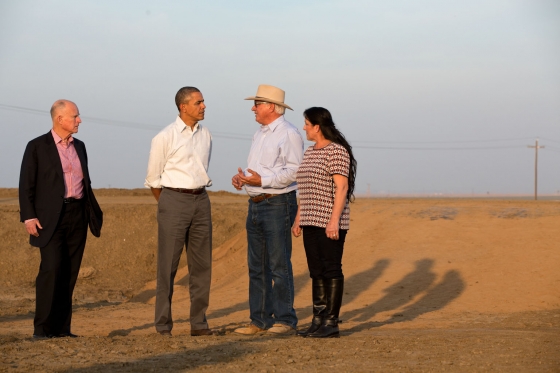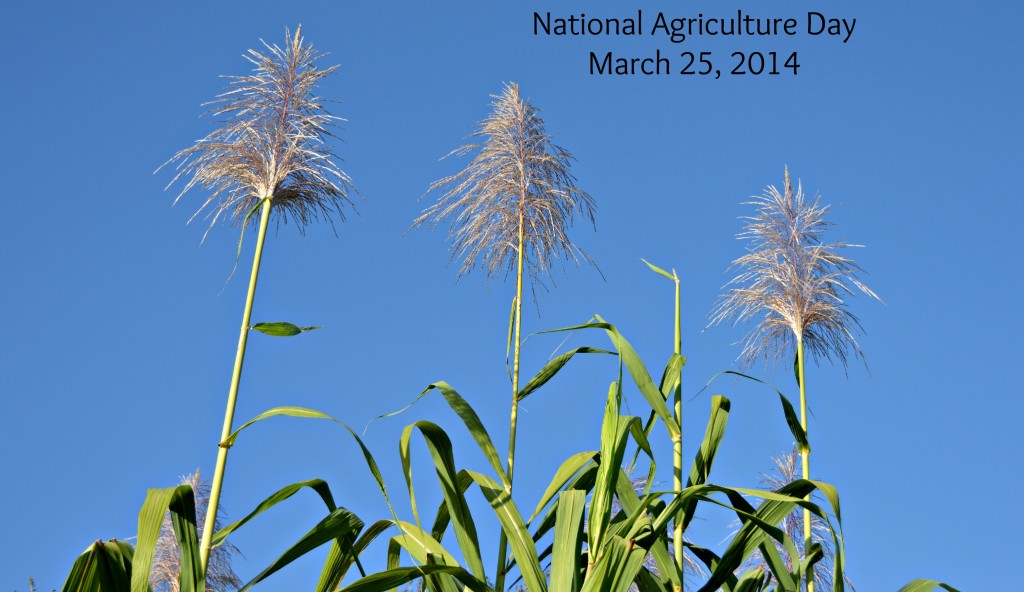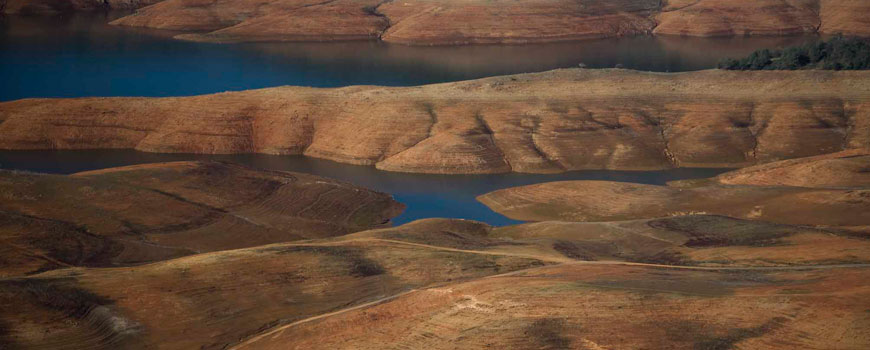Federal Plans Begin to Address Climate Realities
Source: Dru Marion; CalCAN
Despite producing mixed results for sustainable agriculture interests, President Obama’s 2015 budget request is an encouraging sign that the federal government is getting serious about climate change, and particularly about adapting to its impacts.
The President’s proposal includes a $1 billion dollar Climate Resilience Fund, which is intended to strengthen preparedness of states and communities for increasingly extreme weather like floods, droughts, and wildfires.
The fund would support investment in research, technologies, and infrastructure across numerous agencies and sectors, including agriculture.
Word of the fund first came out in February, when Obama met with growers and ranchers in the San Joaquin Valley, the heart of drought-stricken California.
While touring the farm of Joe and Maria Del Bosque, who have fallowed their melon fields due to water shortages, the President emphasized the role federal support could play in alleviating drought impacts and preparing for the future.
“A changing climate means that weather-related disasters like droughts, wildfires, storms, and floods are potentially going to be costlier,” he noted, “And they’re going to be harsher.”
More and more, the President’s administration seems to be acknowledging the link between climate change and adaptation needs in agriculture.
Last month’s visit from the President followed close behind Agriculture Secretary Tom Vilsack’s announcement that the USDA will be launching seven ‘Climate Hubs’ across the country, intended to “deliver science-based knowledge and practical information to farmers, ranchers and forest landowners within each region of the United States to support decision-making related to climate change.” (See the USDA fact sheet).
It is uncertain exactly how the Climate Hubs will be funded, however, and USDA Climate Change Program Office Director Bill Hohenstein has declined to comment on the overall estimated costs of the program.
Meanwhile, the 2015 budget request for USDA comes in at $23 billion – about a billion dollars below FY2014 levels. The Climate Resilience Fund is an obvious place to provide needed financial support to the Climate Hubs, but it remains unclear as to whether the President intends for the Fund to provide that support, and also whether Congress will approve the expenditure.
Despite these uncertainties, National Farmers Union President Roger Johnson has voiced his support for Obama’s budget plan, saying, “The President’s proposed Climate Resilience Fund will provide farmers and ranchers with much-needed assistance after extreme weather events, which are occurring with increasing frequency.”
A growing acknowledgement of the link between climate change and agriculture on a federal level is heartening, to be sure, but it is worth noting that the budget plan leaves significant room for improvement with regard to sustainable ag programs more generally.
For a full overview of what the budget request means for sustainable ag interests, click here.
The California Climate and Agriculture Network (CalCAN) brings a sustainable agricultural perspective to climate change and agriculture policy. Their efforts are aimed at increasing funding for research, technical assistance and financial incentives for farmers whose practices reduce GHG emissions, sequester carbon, and provide many environmental co-benefits.












 Crop water stress detection and monitoring
Crop water stress detection and monitoring






